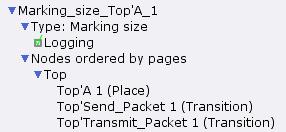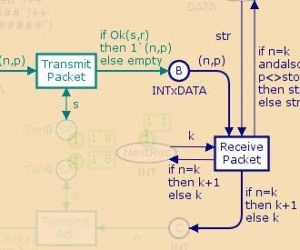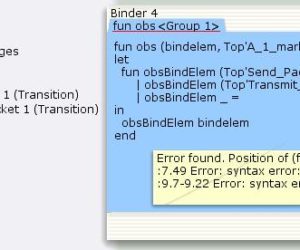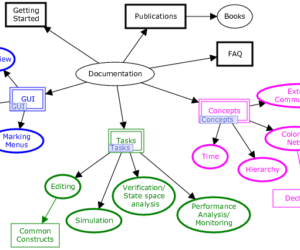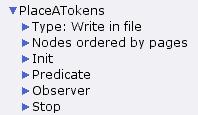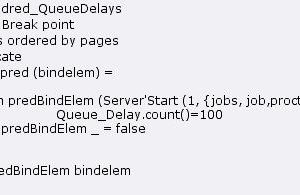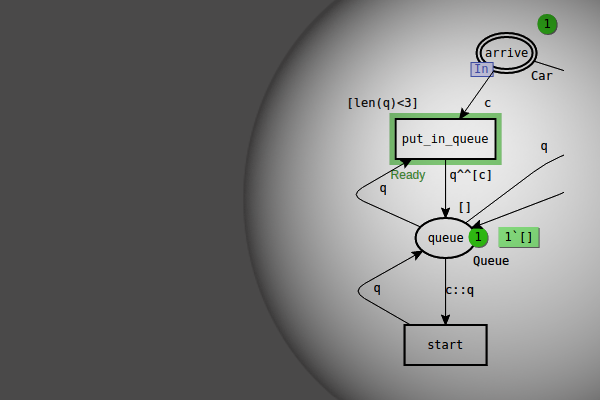Data collector monitors are used to extract numerical data during simulations. The numerical data is used when calculating statistics, and the data may be saved in data collector log files. A data collector can calculate either timed or untimed statistics, which are described on the help pages for calculating statistics. Data collector monitors are used for performance analysis of CPNs. There are four data collector […]
Data Collector Monitoring Functions
Each one of the Data collector monitors has the following monitoring functions: Initialization function is called once before a simulation starts. It returns an optional numerical value (see below for more information about optional values). If the function returns NONE then nothing will happen. If the function returns a value of the form SOME x where x is a number, then x will be used […]
User-defined monitors
User-defined monitors can be used for any purpose that is not covered by the other kinds of Monitors. For example, a user-defined monitor could be used for external communication with Comms/CPN. User-defined monitors are extremely flexible, but they require that the user must write the appropriate monitoring functions. To create such a monitor, apply the Create user-defined monitor tool to an appropriate target. After the […]
User-defined monitoring functions
Each one of the User-defined monitors has the following monitoring functions: Initialization function Predicate function Observation function Action function Stop function Accessibility of the monitoring functions: Function types for the accessible functions init: markings -> unit initialization function pred: subnet -> bool predicate function obs: subnet -> <obstype> observation function action: <obstype> -> unit action function stop: markings -> string stop function The type <obstype> […]
Write-in-file monitors
Write-in-file monitors are used to update files during simulations. To create a write-in-file monitor, apply the Create write-in file monitor tool to the appropriate subnet. After the tool has been applied, a new monitor will be added to the index, and monitor template code will be generated for some of the write-in-file monitoring functions. A default name is suggested, but the name can be changed. […]
Write-in-file monitoring functions
Each one of the Write-in-file monitors has the following monitoring functions: Initialization function is called once before a simulation starts. It returns a string that is added to the file before the simulation starts. Predicate function is called after simulation steps. When the predicate function returns true, the observation and action functions are called. Observation function examines the monitored nodes, and returns a string to […]
Documentation
Getting started GUI Tool Palettes Marking Menus Tasks Editing a CPN Common Constructs Simulation Verification/State space analysis Performance Analysis/Monitoring Concepts Timed Nets Hierarchy Colored nets Declarations Inscriptions and expressions External Communication and Libraries FAQ Publications Books
Monitor index entries
The net overview of a particular net contains an overview of the monitors that are defined for the net. Each entry under the Monitors index entry is either a monitor or a block of monitors. Blocks of monitors are used to divide monitors in to groups, and are similar to declaration blocks. In the figure below the BREAKPOINTS entry is a monitor block, while the […]
Books
There are currently two books about CPNs and CPN Tools available. The book of Jensen and Kristensen is about the CPN language and modeling and validating protocols. The book of Van der Aalst and Stahl is about modeling (business) processes using CPNs.
Example nets
All the sample nets (except for the industrial cases at the bottom) can be found in your installation directory under Samples (default for Windows: c:\Program Files\CPN Tools\Samples). Introductory examples Simple protocols State space analysis examples Monitoring examples Real-life examples If you use either of the below models for research, please refer to the papers listed for each model. We list models without going thru them […]
